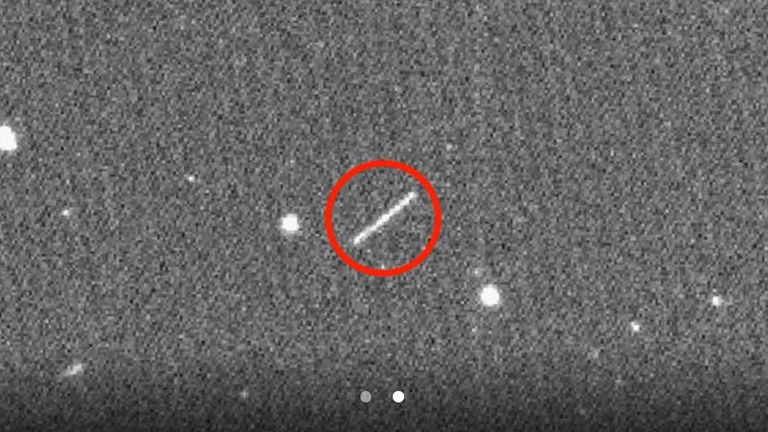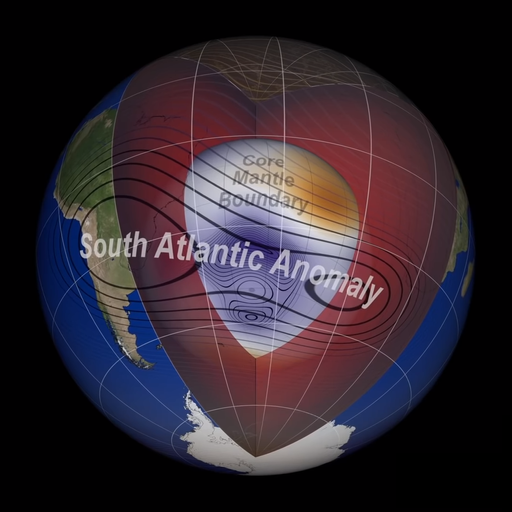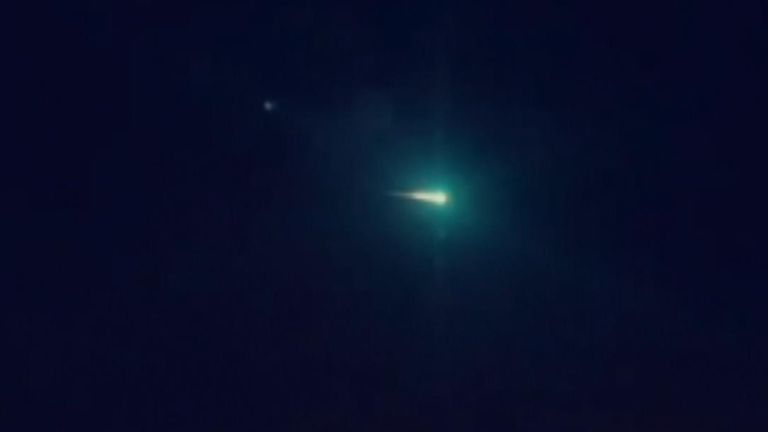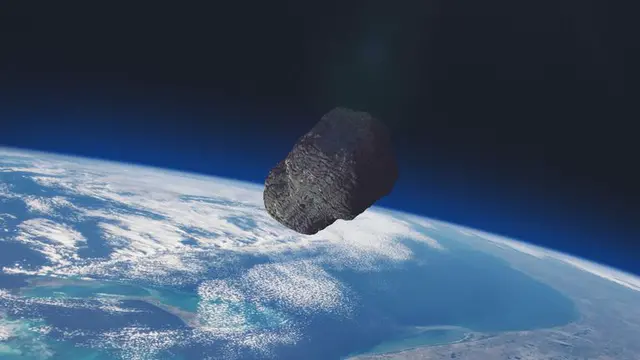An asteroid the size of a car has flown past Earth closer than any seen before without hitting the planet - and NASA admits: "We didn't see it coming."
Known as asteroid 2020 QG,
NASA
said the **space
** rock passed 1,830 miles (2,950 km) above the southern Indian Ocean on Sunday.
If it had actually been on an impact trajectory, it would likely have become a "fireball" as it broke up in the Earth's atmosphere, the US space agency said.

Image:Asteroid 2020 QG (circled) was detected by the Zwicky Transient Facility in California. Pic: ZTF/Caltech Optical Observatories
There are hundreds of millions of small asteroids, but they are extremely hard to discover until they get very close to Earth.
"It's really cool to see a small asteroid come by this close, because we can see the Earth's gravity dramatically bend its trajectory," said Paul Chodas, director of the Centre for Near-Earth Object Studies (CNEOS) at NASA's Jet Propulsion Laboratory in Southern California.
"Our calculations show that this asteroid got turned by 45 degrees or so as it swung by our planet."
Due to its size, it is unlikely 2020 QG posed any danger to the planet.

NASA investigates mysterious South Atlantic Anomaly
However, it was only after the close shave that experts became aware of it.
Mr Chodas told Business Insider: "The asteroid approached undetected from the direction of the sun. We didn't see it coming."

June: Meteor lights up sky in Australia
It was first recorded as just a long streak in a wide-field camera image taken by the Zwicky Transient Facility in California - a robotic telescope which scans the sky for moving objects like comets and asteroids.
The image was taken six hours after the closest point of approach as the asteroid, measuring between three to six metres across and travelling at about 27,600mph (44,400kph) - almost eight miles per second - was heading away from Earth.

April: 'Daytime meteorite' spied over Netherlands
Many very small asteroids hit Earth each year, but only a few have actually been detected in space a few hours before impact.
On average, an asteroid the size of 2020 QG passes this closely only a few times a year.
 简体中文
简体中文

